© 2025 MJH Life Sciences™ , Patient Care Online – Primary Care News and Clinical Resources. All rights reserved.
2 GI Case Quizzes: Fatigue/Poor LFTs; Pain post-Gastric Bypass
Two scenarios: a 42-y/o man with MRCP findings of concern and a 35-y/o woman s/p RNY and C-sections, with RUQ pain. Your solutions?
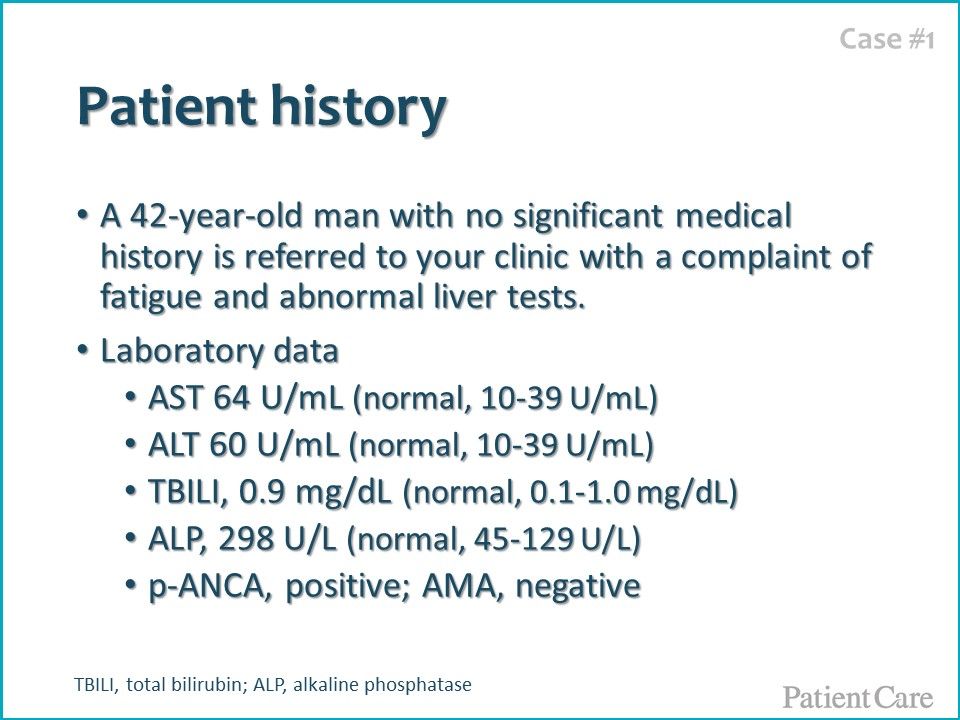
Patient history. This 42-year-old man wiht no significant past illnesses is referred to you complaining of fatigue; results of liver function tests show elevations in AST, ALT, total bilirubin and significant increase in alkaline phosphatiase. p-ANCA is positive; AMA, negative.
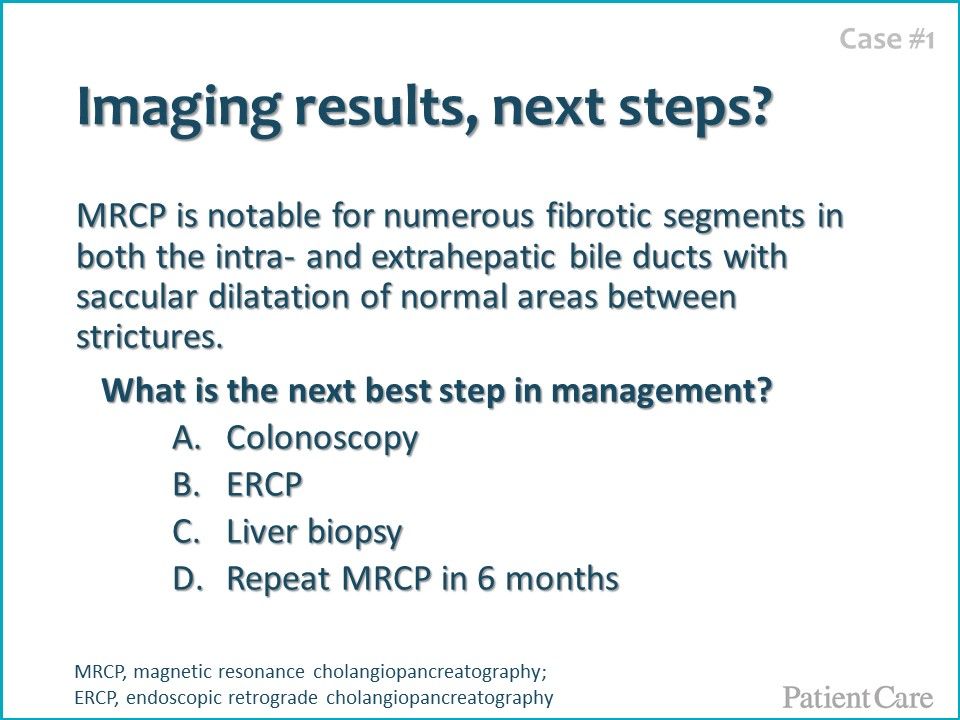
Imaging results, next steps? MRCP findings are notable for numerous fibrotic segments in both intra- and extrahepatic bile ducts with saccular dilatation of normal areas between strictures. What is the next best step in management?
A. Colonoscopy
B. ERCP
C. Liver biopsy
D. Repeat MRCP in 6 months
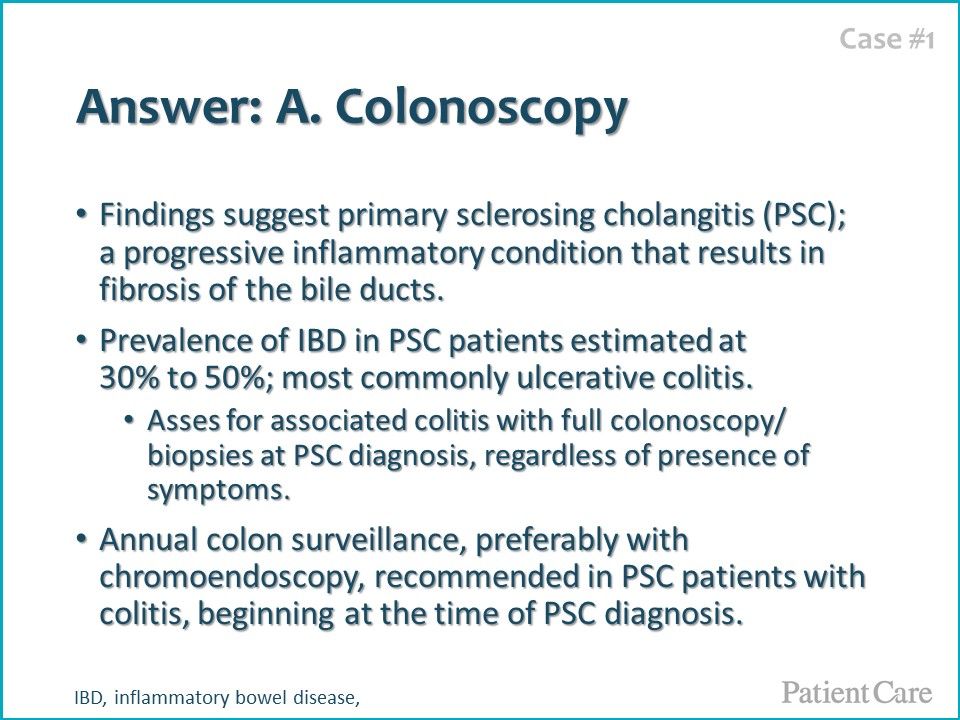
Answer: A. Colonoscopy. The MRCP findings suggest primary sclerosing cholangitis, a progressive inflammatory condition that causes bile ducts to become fibrotic. From 30% to 50% of patients with PSC have comorbid inflammatory bowel disease, typcially ulcerative colitis. Thus full colonoscopy with biopsies is recommended on PSC diagnosis, regardless of presence of IBD symptoms. Annual surveillance is advised.

Patient history. A 35-year-old woman with medical history notable for obesity s/p Roux-en-Y gastric bypass and 2 C-sections presents with colicky right upper quadrant pain that she epxeriences approximately 30 minutes after meals.
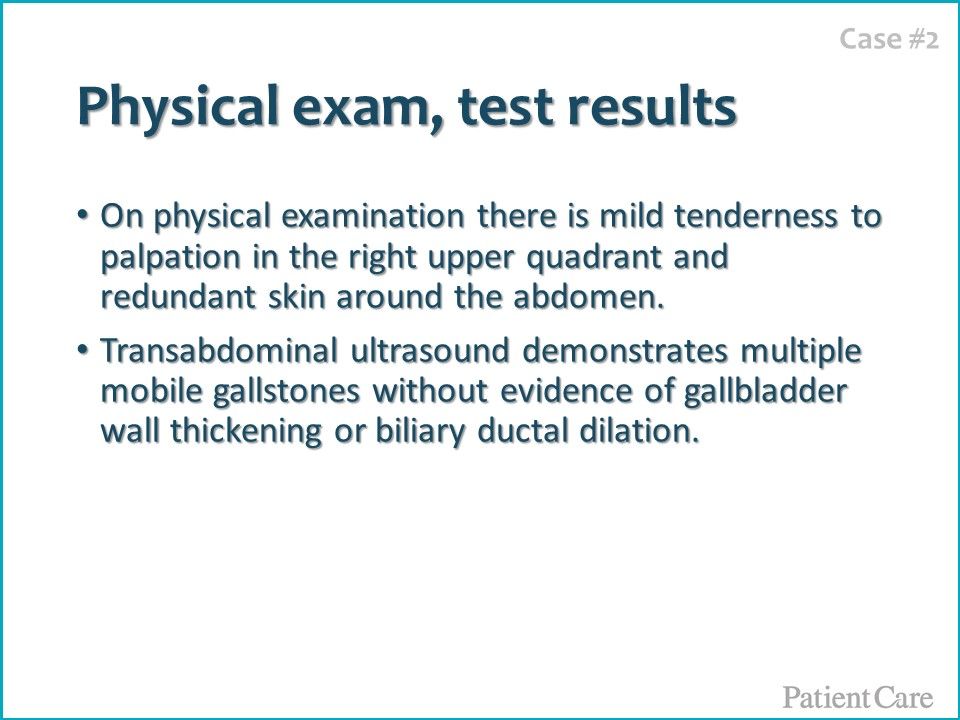
Phyiscal exam, test results. Mild tenderness to palpation is noted in the right upper quadrant and there is redundant skin around the abdomen. Multiple mobile gallstones are seen on transabdominal ultrasound. No evidence is seen of gallbladder wall thickening or billiary ductal dilation.
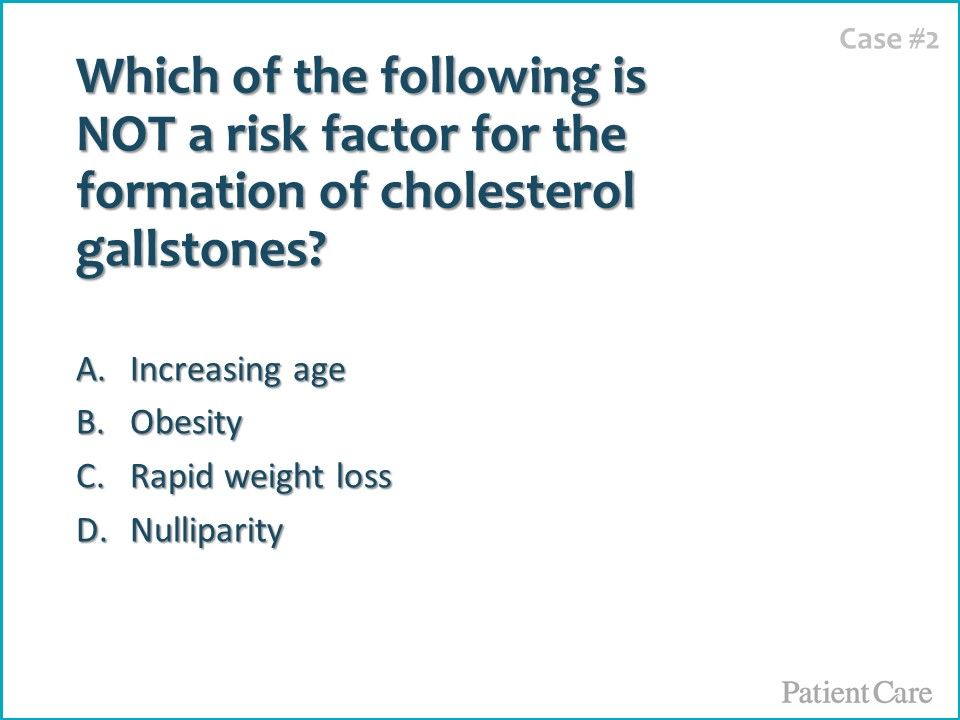
Which of the following is NOT a risk factor for the formation of cholesterol gallstones?
A. Increasing age
B. Obesity
C. Rapid weight loss
D. Nulliparity
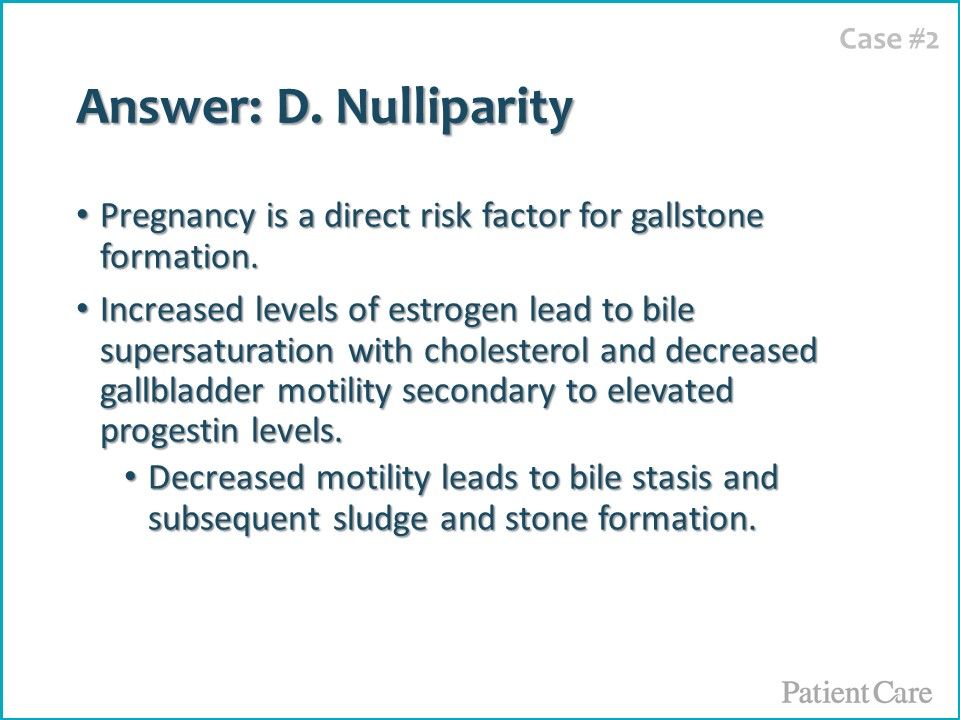
Answer: D. Nulliparity. Pregnancy is a direct risk factor for gallstone formation. When estrogen levels rise, bile becomes supersaturated with cholesterol and gallbladder motility is reduced secondary to elevated progestin. Reduced motility creates an environment for sludge and stone formation.

Other risk factors for gallstones. Approximately 36% of patients who have had RNY gastric bypass will experience development of gallstones; ~5% of those will require intervention. Other risk factors include maternal family history, Hispanic or Native American ethnicity, obesity, rapid weight loss, and ileal disease.

Case #1 Recommended Reading
- Hirschfield GM, Karlsen TH, Lindor KD, Adams DH. Primary sclerosing cholangitis. The Lancet. 2013;382:1587-99.
- Lindor KD, Kowdley KV, Harrison ME. ACG clinical guideline: primary sclerosing cholangitis. Am J Gastroenterol. 2015;110:646.
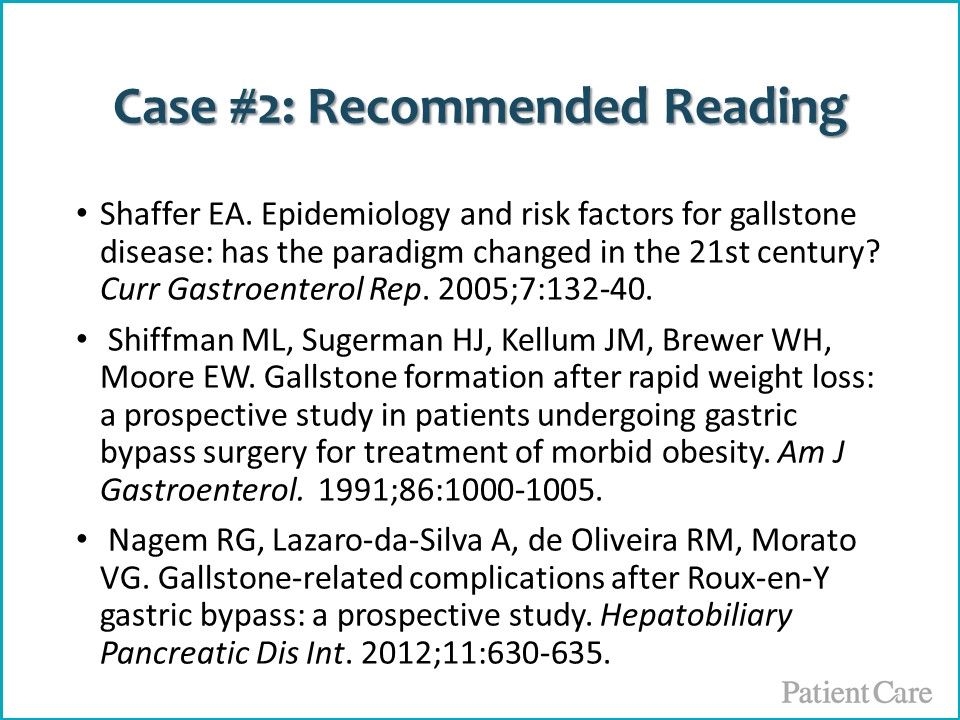
Case #2 Recommended Reading
- Shaffer EA. Epidemiology and risk factors for gallstone disease: has the paradigm changed in the 21st century? Curr Gastroenterol Rep. 2005;7:132-40.
- Shiffman ML, Sugerman HJ, Kellum JM, Brewer WH, Moore EW. Gallstone formation after rapid weight loss: a prospective study in patients undergoing gastric bypass surgery for treatment of morbid obesity. Am J Gastroenterol. 1991;86:1000-1005.
- Nagem RG, Lazaro-da-Silva A, de Oliveira RM, Morato VG. Gallstone-related complications after Roux-en-Y gastric bypass: a prospective study. Hepatobiliary Pancreatic Dis Int. 2012;11:630-635.
What is the next step in management for a 42-year-old man who presents with fatigue, elevated liver function tests, and notable findings on MRCP? In case #2, what are your suspicions about the cause of this 35-year-old woman's symptoms? Why?
Related Content:






